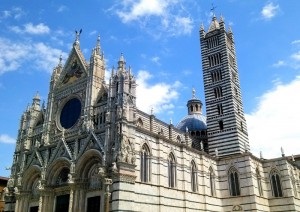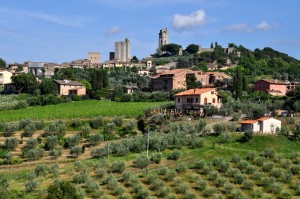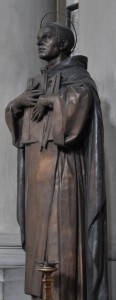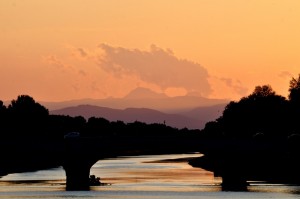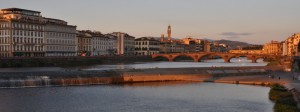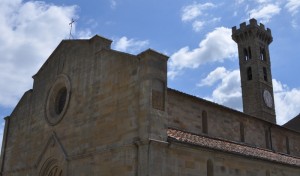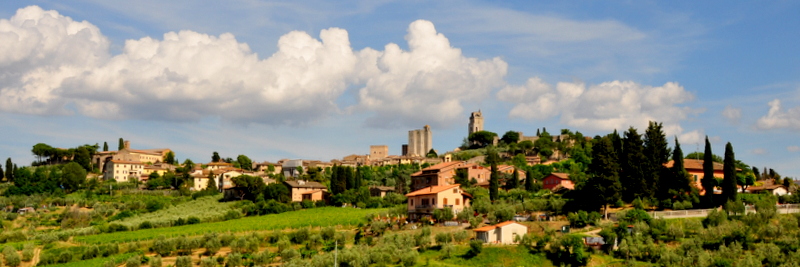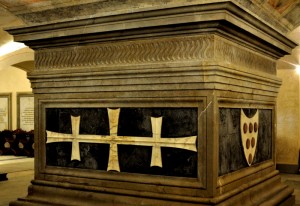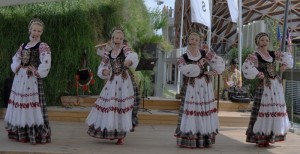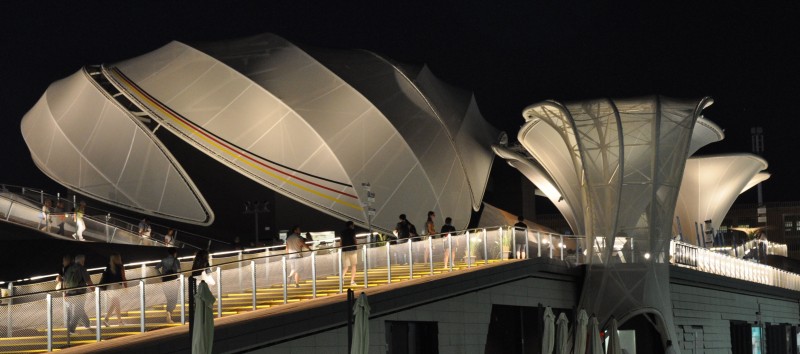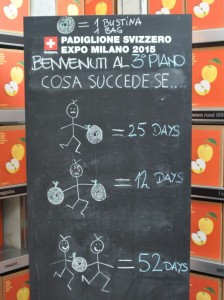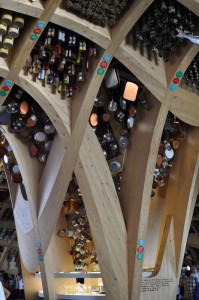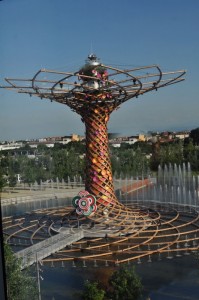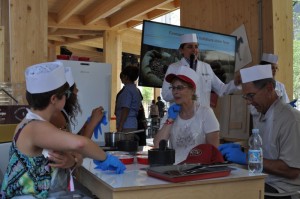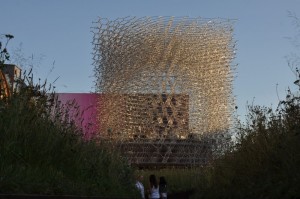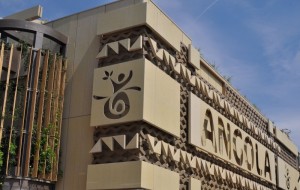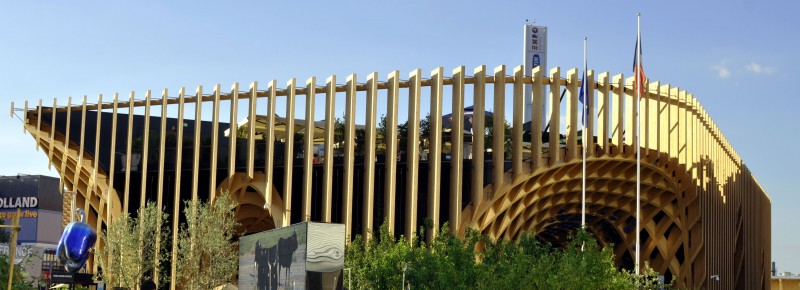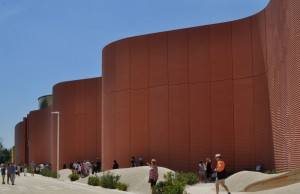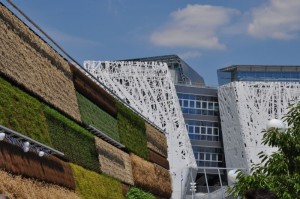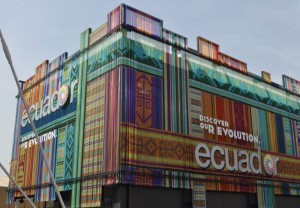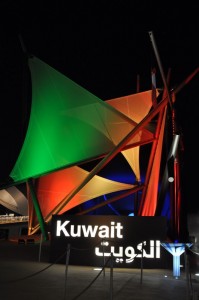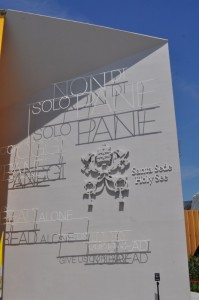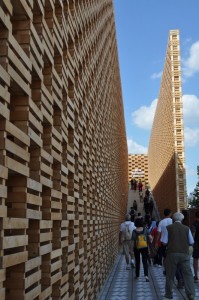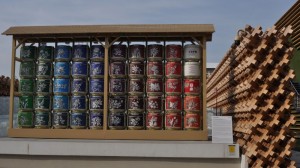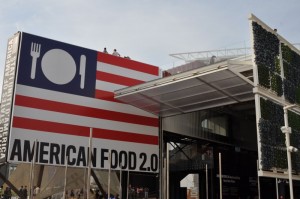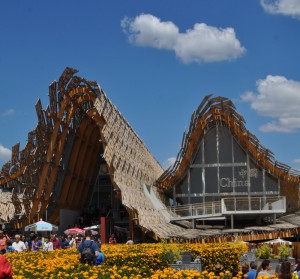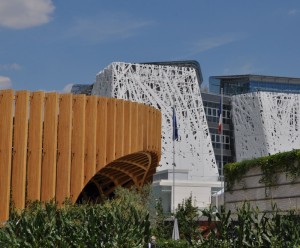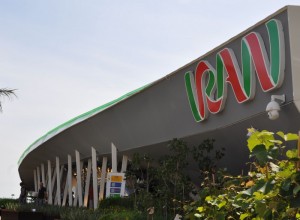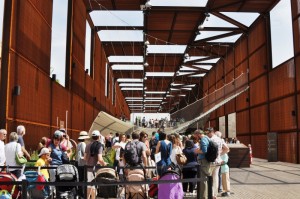June 20-26: Florence, Siena and Milan
June 20 Saturday: Assisi – Florence
The train journey to Florence took just over an hour. It was after 2pm when I settled down in Hotel Enza on Via S. Zanobio, a friendly family-run hotel with 23 rooms. I paid €60 and was lucky to have the last room located at the loft with a private bathroom!
After lunch, I visited the Church and Museum of San Marco whichcontains a large collection and the best works of Giovanni of Fiesole (c.1395-1455), a Dominican friar known as Fra Angelico. In 1437, Cosimo il Vecchio de’ Medici decided to rebuild a church on the site that was first occupied by a Vallombrosan monastery in the 12th century. The work was entrusted to Michelozzo and the decoration of the walls was carried out by Fra Angelico and his assistantsbetween 1439 and 1444. He painted a Crucifix between 1425 and 1428 for the high altar and completed in 1439 one of his most famous works, the Altarpiece with unusual images of the enthroned Madonna and Child surrounded saints standing squarely and witnessing the Virgin in glory in a natural way as if they were able to converse about the shared experience. The church was consecrated in 1443 in the presence of Pope Eugenius IV.
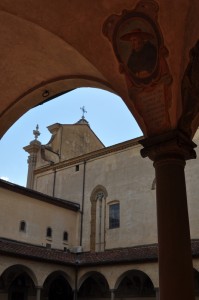 |
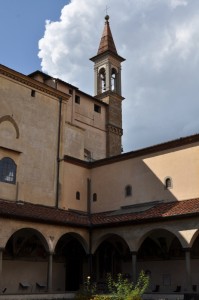 |
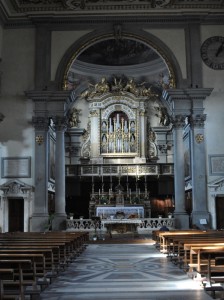 |
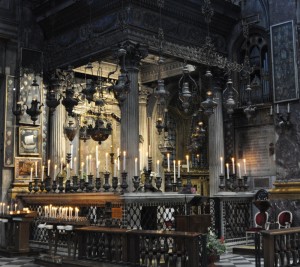 |
I find the convent the most interesting part of the visit. Many of the great figures of 15th-century culture and spirituality lived and worked here: Cosimo il Vecchio de’ Medici, Archbishop St Antoninus and the BlessedFra Angelico who decorated the cells on the first floor, and other spaces in the convent, with frescoes charged with profound spiritual and ascetical meaning. The paintings around the cloister are outstanding.
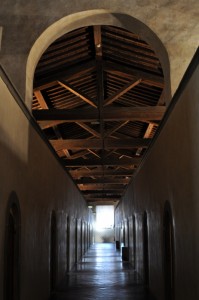 |
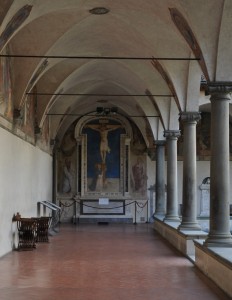 |
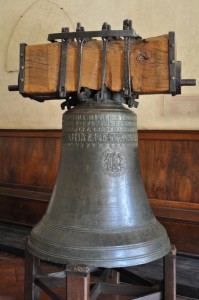 |
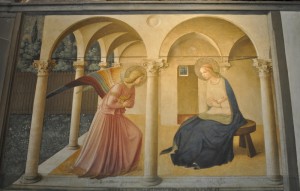 |
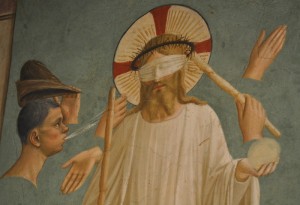 |
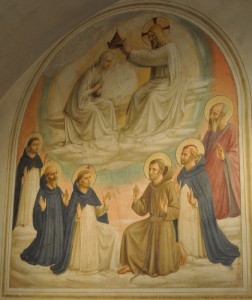 |
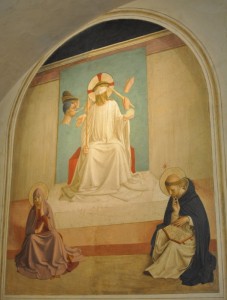 |
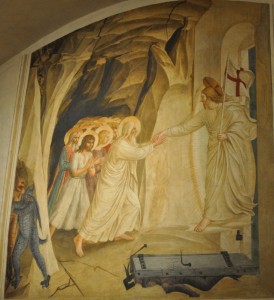 |
From the cloister I reached the rooms forming the Museum of San Marco. The Sala dell’Ospizio, where pilgrims were received, is now a gallery where many of Fra Angelico’s most important panel paintings have been gathered together. In the Chapter House, he painted a complex and allegorical Crucifixion, finished in 1442. In the other rooms of the Museum on the ground floor, works by the principal Florentine painters of the 15th and 16th century including Domenico Ghirlandaio, Alesso Baldovinetti, Giovanni Antonio Sogliani and Fra Bartolomeo, are displayed.
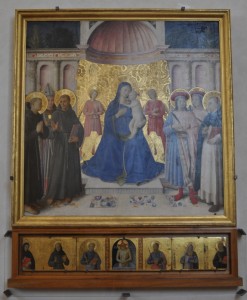 |
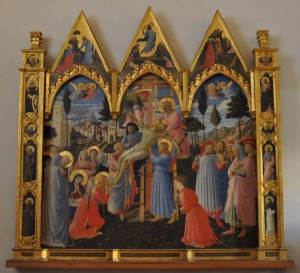 |
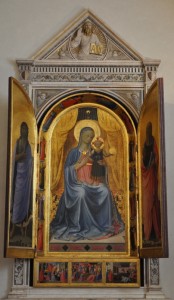 |
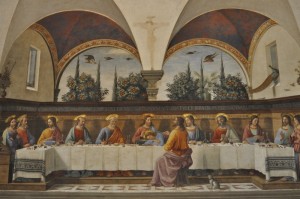 |
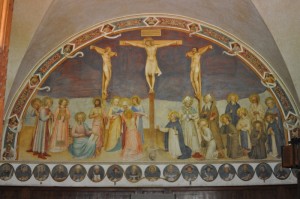 |
The Museum also includes the former Library which is stately beautiful. A considerable number of illuminated choir books are displayed here. The Great Refectory has a collection of works by the School of San Marco i.e. pupils of Fra Bartolomeo. In the Guest House there are numerous fragments of stone carvings, rescued from the ruins when the Jewish quarter and the old market in Florence were demolished in the mid-19th century. Tonight I had a casual dinner in the food court in Mercato Lorenzo. I enjoyed both the food (stripe and wine) and the ambiance.
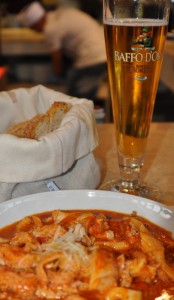 |
|
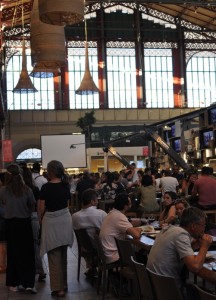 |
June 21 Sunday: Fiesole
Fiesole, a few kilometres away on a double hill overlooking Florence is an ancient Etruscan city. During the Renaissance, many villas were built or enlarged with lovely surrounding gardens. The hill of Fiesole is considered one of the most famous landscapes in the world. The bus ride is less than half an hour. After looking at the Sunday market, I walked uphill to the terrace overlooking Florence. The panoramic views are fantastic.
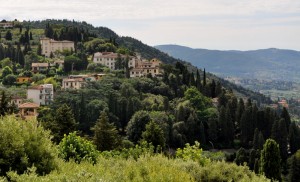 |
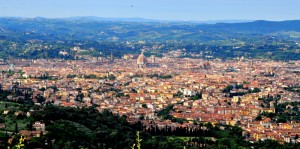 |
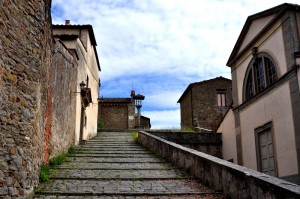 |
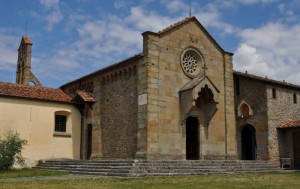 |
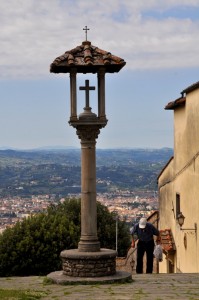 |
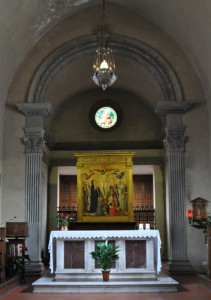 |
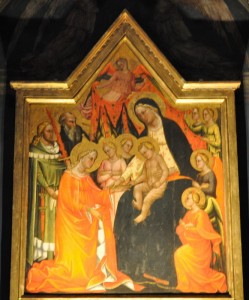 |
Next to the terrace is the Church of St. Alessandro, the oldest church in Fiesole while the Church and Convent of St. Francis straddle the top of the hill. The convent is tranquil and lovely. The Missionary Museum has a lot of interesting exhibits including many Chinese paintings, wood craving and porcelain.
I visited the Cathedral of St. Romolo after the Sunday mass. It is an excellent example of Romanesque style.
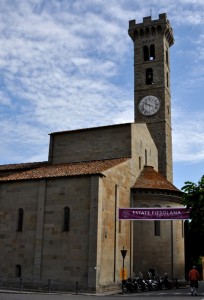 |
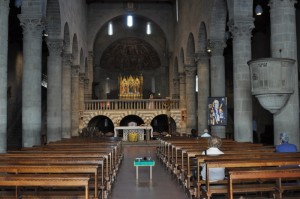 |
Opposite the cathedral is the archaeological site with an area of 35,000m². I brought a combined ticket for three attractions. I spent an hour and a half at the archaeological site and museum. Remains of a Roman theatre, a temple (part Etruscan, part Roman) and Roman baths are fairly well-preserved. The Archaeological Museum has a good collection including beautiful pieces of Greek pottery donated by a private donor.
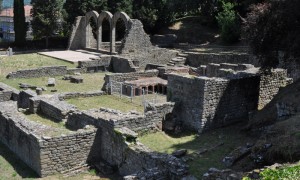 |
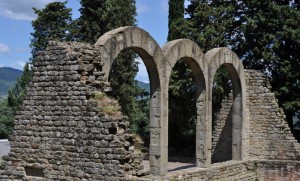 |
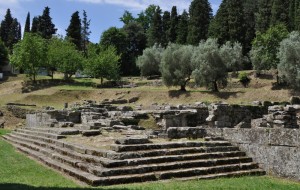 |
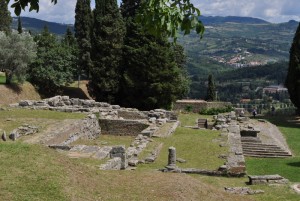 |
The ticket also provides entry to the Bandini Museum which though small, has an interesting collection of Florentine paintings and several Robbia works.
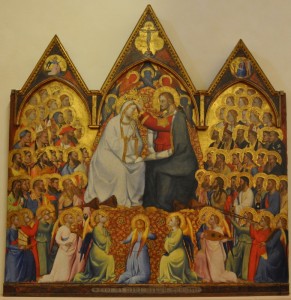 |
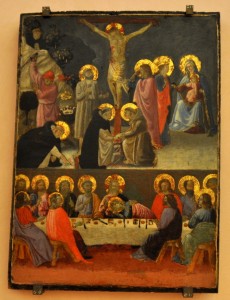 |
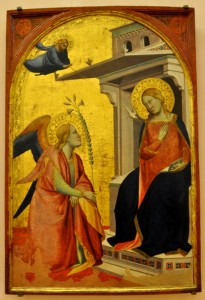 |
After lunch, I walked downhill along Via Fiesolana, Via Vecchia and Via Vecchia Fiesolana, passing by many impressive villas including Villa Medici and Villa Le Balze (Georgetown University). I reached the Convent of S. Domenico, where Fra Angelieo lived and did most of his painting. Unfortunately, it was closed.
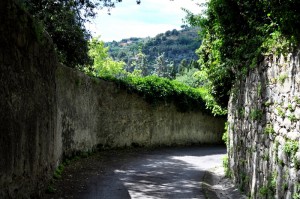 |
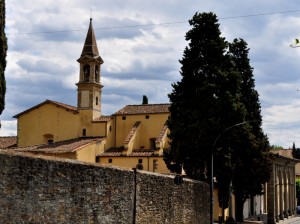 |
At the end of the road is a bus terminal. I caught a bus back to Florence and had a rest before going to the Biblioteca di San Giovannino dei Padri Scolopi (opposite the Medici Chapel) to see “The Medici Dynasty Show”. The Medici family attained wealth and politic power in Florence in the 13th century through its success in commerce and banking. Beginning in 1434 with the rise of Cosimo il Vecchiode’ Medici (1389-1464), the family’s support of the arts and humanities especially during the reign of Lorenzo the Magnificent (1449-1492) made Florence into the cradle of the Renaissance, a cultural flowering rivalled only by that of ancient Greece.
The Medicis produced four popes and their genes have been mixed into many of Europe’s royal families. The last Medici grand duke, Gian Gaston died without a male heir in 1737 ending the family dynasty after almost three centuries. Control over Tuscany then passed to Francis of Lorraine who married Hapsburg heiress Maria Theresa of Austria thus ushering in the long European reign of the Hapsburg-Lorraine family.
This hour-long drama is in English with a man and a woman performing the role of Gian Gaston and his sister. Through their dialogues, the director tells the 300 years of the history of Florence and the Medici family blending mystery, intrigue, love and war. I paid €26 for the ticket. There was a small audience but the performers are very professional. The only problem is that I did not know enough of the history of both Florence and the family to fully appreciate it. The show was over by 8:15pm. I still had time to watch sunset by River Arno.
June 22 Monday: A day trip
In order to see the Tuscan beautiful countryside, I joined a popular day trip to Siena, San Gimignano and a vineyard for wine tasting for €55. The bus with over 50 tourists departed from Florence before 9am and returned at 6pm. The weather was fabulous. We had five stops.
First stop (40 minutes)- Monteriggioni, a small picturesque medieval walled town, located on a natural hillock built by the Sienese in 1214-19. After withstanding many attacks from the Florentines, the town finally came under the control of the Medici forces. The circular walls with a total length of about 570m have 14 towers. I entered the town fromPorta Florentinein the north and followed the main street to Piazza Roma dominated by a Romanesque church with a simple facade. At the end of the street is Porta Romanafacing Rome to the south.
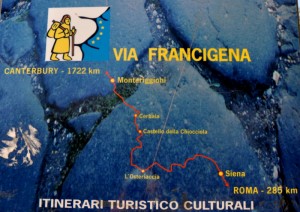 |
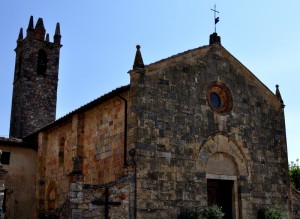 |
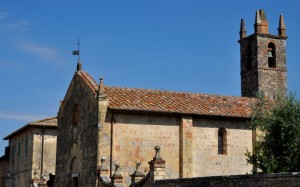 |
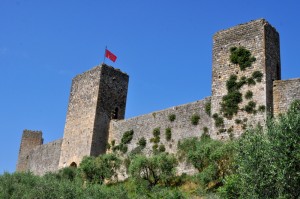 |
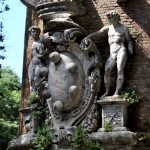 Second Stop (3 hours)- Siena, an exceptional medieval city made up of yellow-ochre buildings, terracotta rooftops and green shuttles.
Second Stop (3 hours)- Siena, an exceptional medieval city made up of yellow-ochre buildings, terracotta rooftops and green shuttles.
During the period of the Republic of Siena from the late 11th century to 1555, Siena entered its golden age as a prosperous trading post with streams of pilgrims passing to and from Rome. Before the Black Death in 1348 when the city was home to 50,000 people. Following defeat in the Italian War of 1551-1559, Siena surrendered to Spain in April 1555 marking the end of the republic. The new Spanish King Philip ceded it to the Grand Duchy of Tuscany to which it belonged until the unification of Italy in the 19th century.
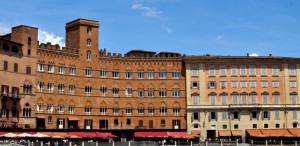 |
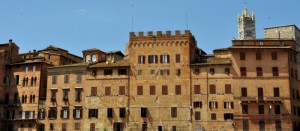 |
The historic centre of Siena is a World Heritage Site. We began a walking tour at 11am. Our guide took us to Piazza del Campo,a shell-shaped town square where the imposing Palazzo Pubblico with its tall Torre del Mangia stands. I visited Siena in 1980 and can still remember the unique and impressive architectural features of the square where the 600-year-old Palio horserace takes place twice a year.
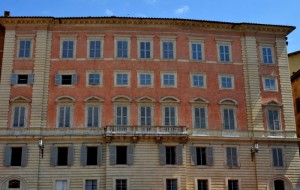 |
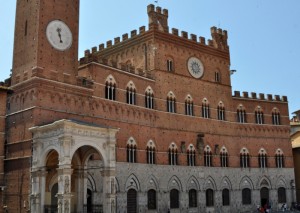 |
We had a guided tour in the Duomo, a masterpiece of Italian Romanesque-Gothic architecture. Construction began in the 12th century and its main facade was completed in 1380. Its interior is extravagant and lavish with an extraordinary inlaid marble mosaic floor. The pulpit is an octagonal 13th-century masterpiece sculpted by N. Pisano (similar to the one in the Duomo in Pisa). I went inside the Piccolomini library which is impressive with well preserved Renaissance frescoes. I must have visited the cathedral before. But I had no recollection of the marble floor or the impressive frescoes.
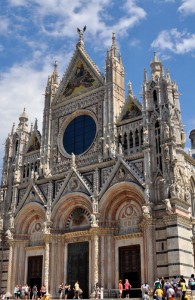 |
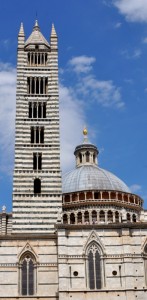 |
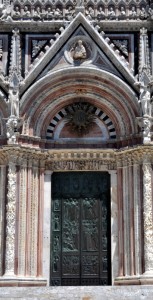 |
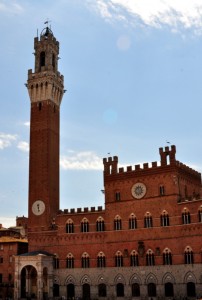 |
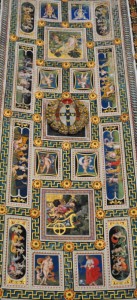 |
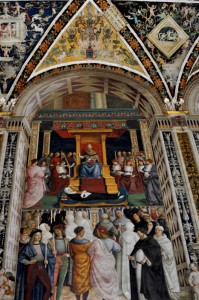 |
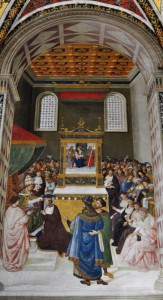 |
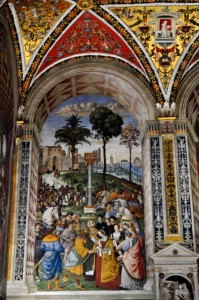 |
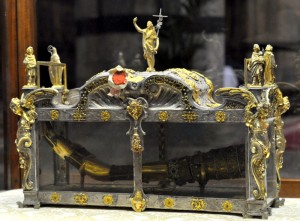 |
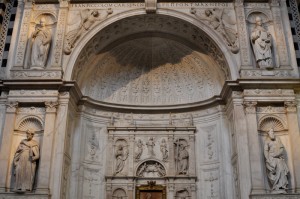 |
The guided tour finished at 12:30pm inside the cathedral. Those who would take a set lunch left for the restaurant with the guide while others had free time till 2:15pm. Of course, I spent time on sightseeing. After staying in the cathedral for over an hour, I wandered aimlessly in the historic centre. Tourists were everywhere but not as crowded as in Florence.
Third Stop (an hour) – San Gimignano, a small medieval hill town (334m above sea level) with an Etruscan settlement dating 3rd to 2nd century B.C. Its history begins around 10th century and developed considerably during the Middle Ages thanks to the Via Francigena(an ancient “Francigena” pilgrim route) running through the town. It became a free commune in 1199 and entered its golden era growing fast as an urban centre. Owing to internal strife and later a plague in 1348, the town was in crisis which finally resulted in its submission to Florence in 1353.
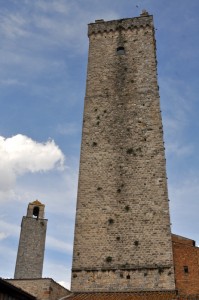 |
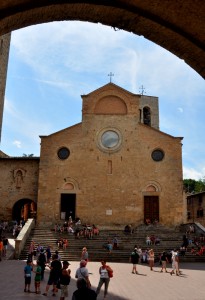 |
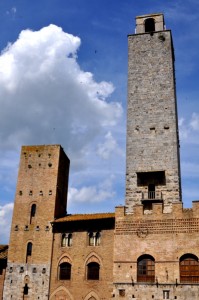 |
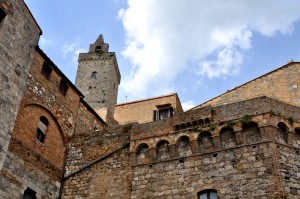 |
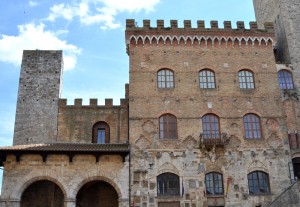 |
The decline and neglect ever since have however kept the town’s artistic and architectural importance intact. Today, this picturesque town with cobble stone streets, beautiful squares (Piazza Duomo and Piazza delle Cisterna), tower-houses, museums, ice-cream and souvenir shops is a World Heritage Site and a thriving tourist destination. Of the original 72 medieval towers, only 14 remain. The views of the Tuscan countryside is superb. Unfortunately, the stop was too brief to allow me to visit the Duomo which is now a museum.
Fourth stop (an hour) – wine tasting in an organic vineyard. We tasted four different types of Chianti wine.
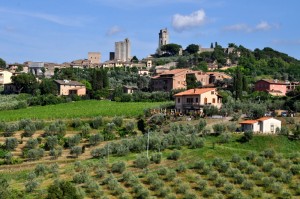 |
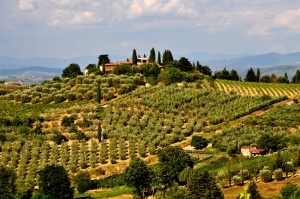 |
It’s my birthday. After a nice day trip, I treated myself with a 3-course dinner in a restaurant recommended by Hotel Margaret.
June 23 Tuesday: Florence – Milan
My train for Milan would leave after 1pm. Hence I took my last stroll in the historic centre and visited the historical San Lorenzo complex (€12). The basilica is the oldest Florentine Cathedral consecrated by St Ambrogio in 393 A.D and dedicated to the martyr Lorenzo. The structure today was rebuilt/renovated by Giovanni di Bicci, founder of the Medici’s family. With a combined ticket, I also visited the cloisters, the Museum of Treasure, and the Laurentian Library designed by Michelangelo.
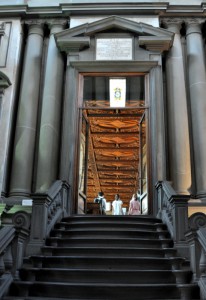 |
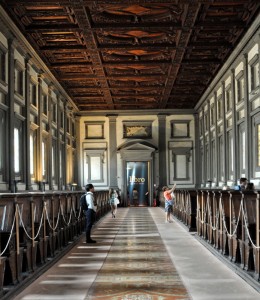 |
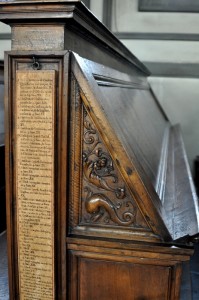 |
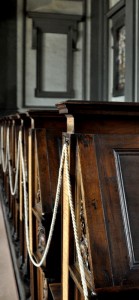 |
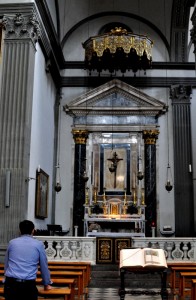 |
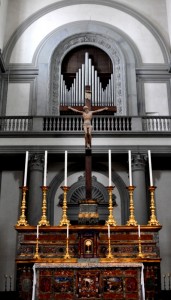 |
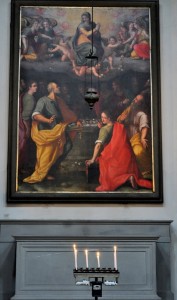 |
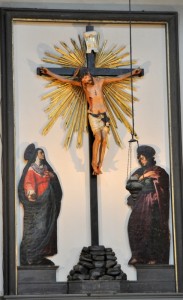 |
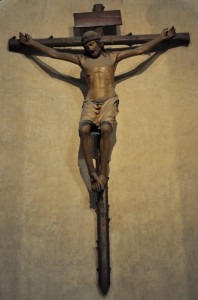 |
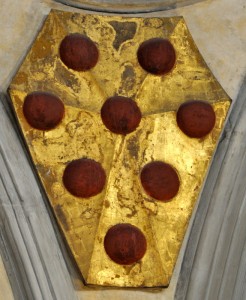 |
The train to Porta Garibaldi, Milan is comfortable and fast. I arrived before 4pm. I had booked a room at Hotel Arno on Via Lazzaretto close to Via Tunisia for two nights as I had already reserved a room near the train station where I had left my luggage a month ago. The taxi driver demanded €20 for a short ride to the hotel. As the tram S33 goes near the hotel, I decided to take public transportation. I paid €1.2 for a pleasant ride and arrived at the hotel without problem.
I walked around the area and had dinner in a local restaurant where I met a nice young lady from Shanghai on a duty trip in Milan. She is educated and well-travelled and is now working in the Netherlands. She represents the promising new generation of China.
June 24 & 25 Wednesday & Thursday: Milan Expo 2015
I had never been to an expo. When I learnt about the Milan Expo 2015, I decided to buy a 2-day pass for €57. I could easily reach the expo site by taking the red metro line from Porta Venezia. I brought a booklet “Milan Expo 2015 for Dummies” that gives me some tips on where to go and what to do.
The first expo named the “Great Exhibitions” was held in London in 1851. The theme of this year’s expo (35th expo) held from May 1 to October 31 is “Feeding the Planet, Energy for Life”. One hundred and forty-five countries take part and 53 participating countries have built their own pavilions. Over 70 countries take part in nine thematic clusters namely Bio-Mediterranean; Islands; Arid Areas; Grain & Tubers; Fruits & Vegetables; Spices; Coffee; Cocoa and Rice. In addition, there are five thematic areas of which four are on site (Pavilion Zero, Biodiversity Park, Children’s Park and Food of the Future) while the fifth one is at the Triennale Museum in Milan. Some 20 million visitors are expected to visit the expo.
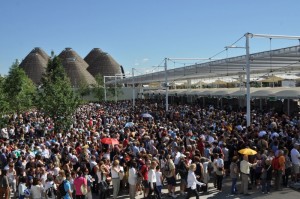 |
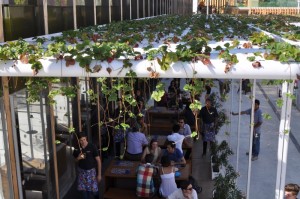 |
A unifying concept behind this expo is to create a sustainable ‘green’ expo. The exposition area comprising 1.1 million m² is green like a park! I spent a total of 22 hours inside the expo ground and managed to visit some 35 pavilions, most of the 14 thematic clusters and areas. A few things are worth mentioning. The expo area has two focal points replicating the layout of a Roman city: the 1.5 km-long Decumanus (the World Avenue) is the axis and the Cardo is the main perpendicular route. All the pavilions and main structures face the Decumanus.
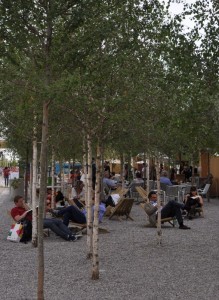 |
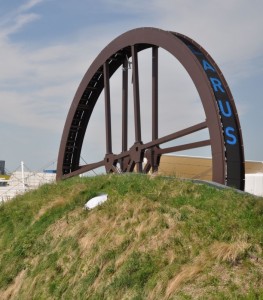 |
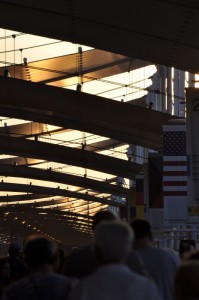 |
What strikes me most
It is my first expo and I do not know what to expect. I am impressed by the green, relaxing and festive atmosphere. Milan is very hot in the summer. As a result of greening and a sensible design providing a cover over Decumanus, I find the heat bearable. The site is easily accessible and well managed. The vast number and range of eateries at reasonable price are commendable.
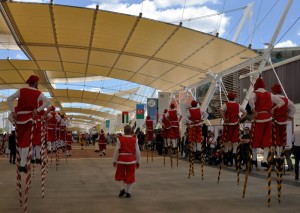 |
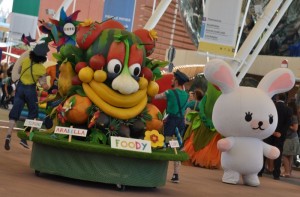 |
Nevertheless, I find the designs and presentations of most of the pavilions mundane and lack of imagination. Visitors are normally expected to queue, follow a standard route and watch video after video. I hate queues and find most of the video presentations boring.
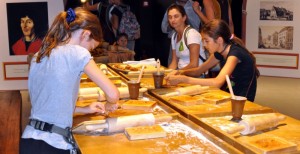 |
The idea of thematic clusters is good making it easily for some poorer countries to participate. Unfortunately, some of the clusters are not ready at the time of my visit. For those present, they mainly use the space for tourism promotion or selling souvenirs.
Pavilions I like most
No 1 – Germany. Its theme is “Fields of Ideas” showcasing films and exhibits. Visitors are invited to become “active” with the “Seedboard” and make their own “Fields of Ideas”. I am impressed by its smart and innovative approach. Its rooftop garden with a panoramic view of the whole expo area is most beautiful especially after dark when the whole area is lit up.
No 1- Switzerland with a unique presentation and message. Its theme “Confooderation Helvetica” attempts to make visitors aware of ethical consumerism as a way to end famine. The pavilion has four interconnecting towers, each with a pile of food rations (coffee, dried apple, rock salt from the Swiss mines and a plastic cup that can be filled with clean water). Visitors can take whatever they want. But if they are greedy and take more than a packet, none would be available for late comers.
I give a thumb-up for the Swiss pavilion for three reasons. First, I hate queues and cannot understand why tickets with a time of entry cannot be distributed to visitors. The Swiss are smart and time conscious: they do not waste their time nor my time. I arrived at 2pm and collected a ticket for entry at 6:15pm.
Second, Swiss are practical and always do things for a reason. It gives free lessons on chocolate making. I joined a session when a young couple gave me their ticket. I had lots of fun making chocolate with an Italian family of four from Turin. Before leaving, our host reminded us that Daniel Peter, a Swiss, was the first person to put milk chocolate on the market in 1875. Rudolf Lindt (1855-1909), another Swiss invented the conching machine and other processes to improve the quality of chocolate. An effective way to link chocolate with Switzerland.
Third, the Swiss pavilion is the only one giving freebies to visitors. Of course, it is part of an educational process.
No 3 – Angola. The pavilion though not big, is well-designed: the sound, lights and presentations enable me to feel the pulse and energy of this growing country. It has aroused my interest and I shall visit it one day. Its roof top garden is beautiful.
No 4 – France. I like the simple and artistic French design: a wooden pavilion with all exhibits located on the ground floor. Visitors approach the pavilion through fields of maize, wheat and vegetables.“Produire Et Norrir Autrement” is the theme: exhibits shows innovative models for food production and how to help developing countries become self-sufficient.
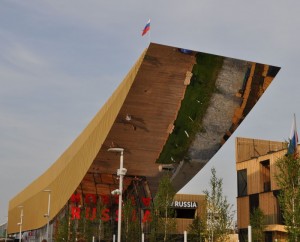 |
No 5- Israel. The pavilion has a strikingly beautiful vertical garden. Its theme “The Fields of Tomorrow” is informative and education: I learn how the Israelis have invented “drop by drop” irrigation and other innovations which can raise food production.
No 6 – Japan. The queue was long and I had to wait for over an hour. I saw a couple of video presentations on nature, life of farmers and rural landscape centred around its theme – “Harmonious Diversity”. Japanese are aesthetic and as expected, everything is impeccable and beautifully presented. The real surprise comes at the end of the guided tour when all visitors were seated in a future restaurant with two young presenters talking about food which appears on a TV screen on the dining table. Japanese cuisine is promoted as an example of healthy cuisine.
Most disappointing pavilions
Palazzo Italy– Italy is the host country and Palazzo Italy is the largest pavilion. I queued for some 80 minutes and the exhibits are spread out on six floors. Apart from some photos of beautiful parts of Italy, I cannot recall seeing anything special or directly linked with the theme of the expo. Have I missed something or am I stupid?
China‘s Bamboo Pavilion– The theme “Land of Hope, Food for Life” with Man as the Earth’s guardian is fine. But I find the presentation without substance, imagination and aesthetic quality. A large open space is filled with thousands of LEDs. What is the significance and relevance of LED? As Chinese, I have high expectations. Hence my disappointment.
June 26 Friday: Milan, Italy – Hong Kong
I had an 11-hour direct flight to Hong Kong. I like Milan airport which has good bus service to the train station. It takes about an hour and cost €10. I checked in after 11:30am, looked at shops before boarding the plane after 12:30pm. The flight departed on time around 1:30pm and I had a comfortable flight ending my 158-day journey.
Remarks
Italy has 51 sites inscribed on the World Heritage List making it the country with most World Heritage Sites (followed by China with 47 sites). Of these four sites are shared with other countries. Apart from four sites of natural type, the rest are all cultural sites. I have been to ? so far including the eight sites visited in Assisi, Cinque Terre, Florence, Genoa, Pisa, San Gimignano, Sardinia and Siena in May and June.
Italy is indeed a top-notch destination with rich tourism assets. Italian medieval cities, countryside and coastline are stunning. I find Italians lively, easy-going and passionate about living, arts, beauty, and food that are core ingredients for happy living and a good life. I like the country so much that I already have plans to return in November to spend a few days around Venice. But my dream is to take on one day the Via Francigena – the ancient pilgrim route to Rome!


